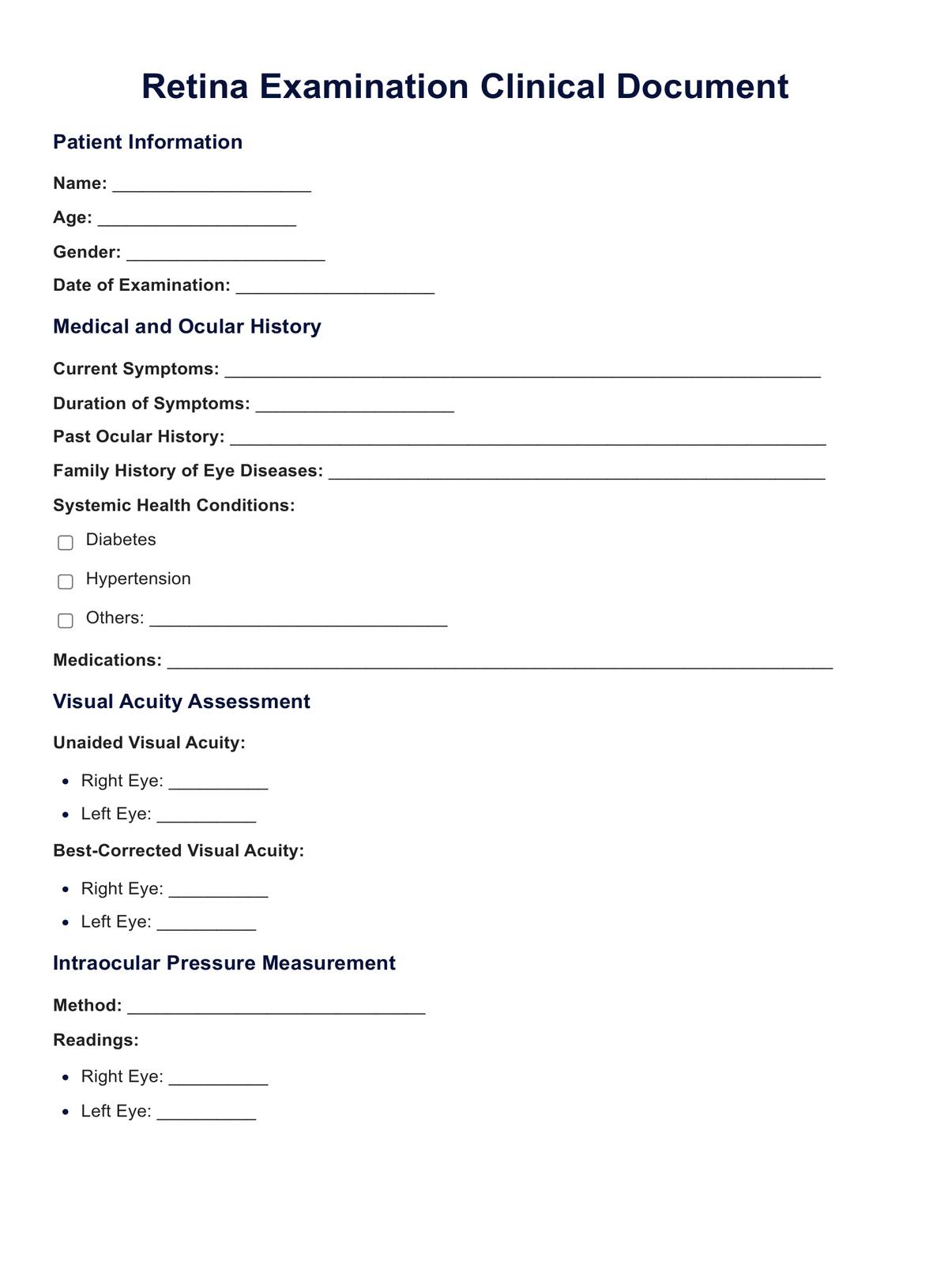A retinal exam helps eye doctors identify conditions like diabetic retinopathy and macular degeneration by examining the retina and optic nerve for abnormalities.

Learn about retina exams: essential for detecting eye conditions like diabetic retinopathy and macular degeneration, ensuring eye health and vision safety.
A retinal exam helps eye doctors identify conditions like diabetic retinopathy and macular degeneration by examining the retina and optic nerve for abnormalities.
Optical coherence tomography (OCT) provides detailed images of the retina, crucial for diagnosing diseases like macular degeneration and assessing retinal thickness.
Abnormal blood vessels, often seen in diabetic retinopathy, are detected through dilated eye exams and tests like fluorescein angiography.
EHR and practice management software
*No credit card required
Free
$0/usd
Unlimited clients
Telehealth
1GB of storage
Client portal text
Automated billing and online payments